Harnessing the Power of the Sun: How Solar Power Plants Are Designed
As the world transitions toward renewable energy, solar power plants are leading the way in sustainable energy production. But what goes into designing a solar power plant that delivers efficiency and sustainability? From selecting high-quality solar panels to planning module mounting structures, each step involves precision, expertise, and the latest technology.
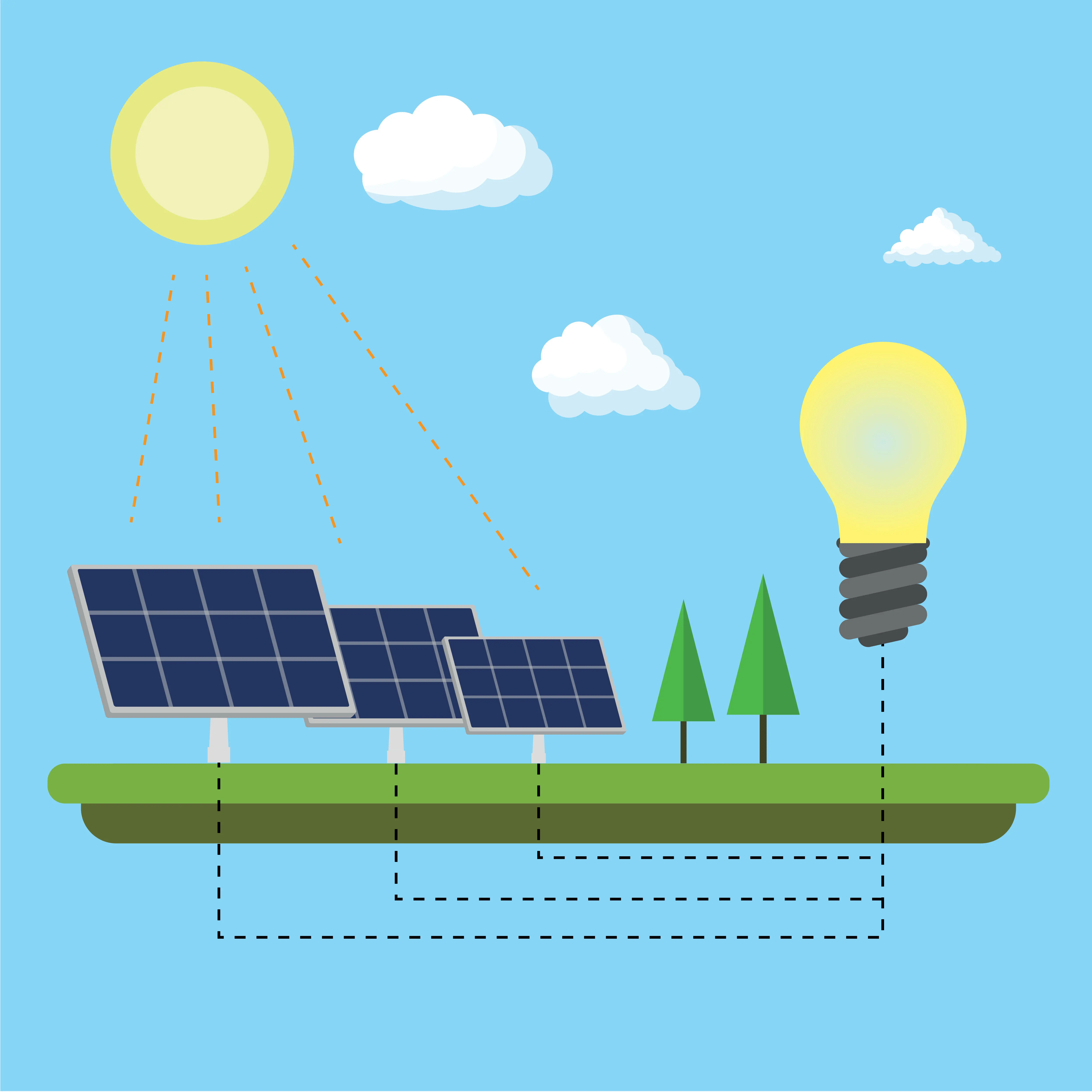
What is a Solar PV System?
A solar photovoltaic (PV) system is a renewable energy solution designed to generate electricity directly from sunlight using photovoltaic technology. These systems consist of several key components:
Solar panels: Transform sunlight into clean, renewable electrical energy.
Solar inverter: Transforms the direct current (DC) produced by solar panels into alternating current (AC) for use in homes or businesses.
Mounting structures and cabling: Secure the panels and facilitate energy transfer within the system.
Additional features (optional): Integrated batteries for energy storage and solar tracking technology to enhance efficiency by optimizing sunlight capture.
Unlike solar technologies used for heating or cooling—such as concentrated solar power or solar thermal systems—PV systems convert sunlight directly into electricity.
Solar PV systems are available in a range of sizes:
Small systems: Rooftop-mounted or building-integrated solutions, typically ranging from a few kilowatts to several tens of kilowatts.
Large-scale systems: Utility-scale power plants capable of producing hundreds of megawatts of electricity.
The majority of PV systems today are connected to the electrical grid, while off-grid or stand-alone systems make up a smaller segment of the market. These versatile systems are vital in the transition toward cleaner, more sustainable energy sources.
Now, let’s discover the essential stages of constructing a successful utility-scale solar power plant, from site selection and design to procurement, installation, and commissioning. This comprehensive guide ensures every step is executed seamlessly for optimal performance and sustainability.

Understanding the Energy Requirements and Site Analysis
Choosing the right location for a solar power plant is a complex yet crucial step in ensuring the project's success. Here’s what you need to know:
Key Factors to Evaluate
Sunlight Exposure: The site must receive ample solar irradiance. Locations with higher exposure to sunlight are more suitable as they maximize electricity generation.
Land Topography: The land’s slope and orientation directly affect energy collection efficiency.
Grid Connectivity: Proximity to existing power grids is critical for reducing infrastructure costs and ensuring seamless electricity distribution.
Dos and Don’ts of Site Selection
Do: Conduct an environmental impact assessment to ensure the location does not disrupt local ecosystems or biodiversity.
Don’t: Ignore local regulations and zoning laws, as these can lead to costly delays or legal challenges.
Selecting an optimal site goes beyond technical feasibility. It requires balancing energy efficiency, environmental stewardship, and compliance with legal frameworks to lay a strong foundation for long-term success.
Accurate site analysis forms the foundation for selecting the right components and optimizing plant performance.
Choosing the Right Solar Modules
The way solar panels are installed plays a crucial role in maximizing energy generation. The factors like the sun’s position, the terrain, and surrounding elements to determine the ideal placement and tilt for the panels. By optimizing their orientation, we ensure they capture maximum sunlight throughout the day, leading to efficient and higher energy production.
The choice of modules significantly impacts energy output and efficiency. Leading solar panel manufacturers provide various types of panels, with monocrystalline modules being a preferred option due to their:
- High energy conversion efficiency.
- Sleek and compact design.
- Durability and long lifespan.
Collaborating with experienced solar module manufacturers ensures access to cutting-edge technologies and reliable panels. Manufacturers in India are recognized for producing world-class photovoltaic solutions that meet global standards.
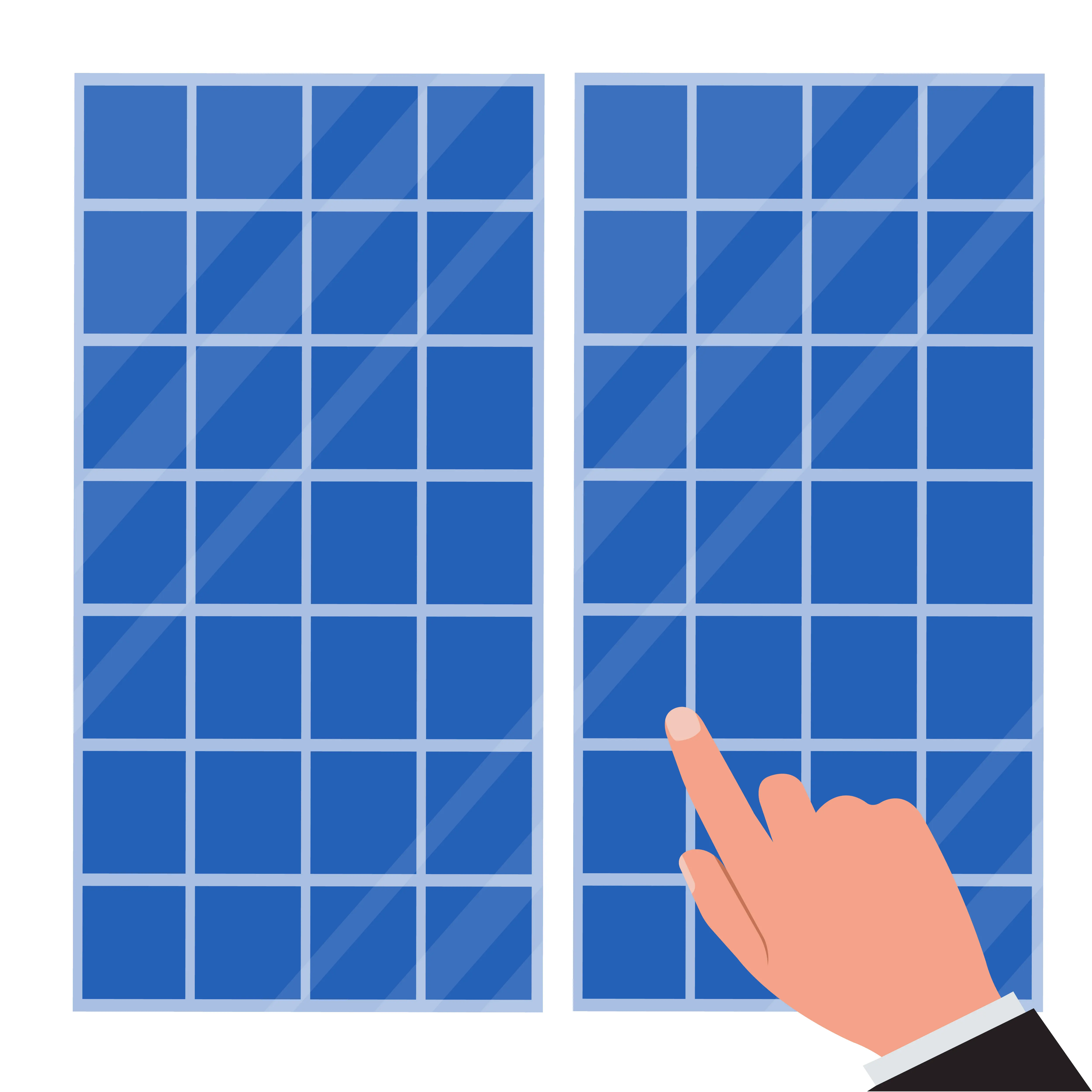
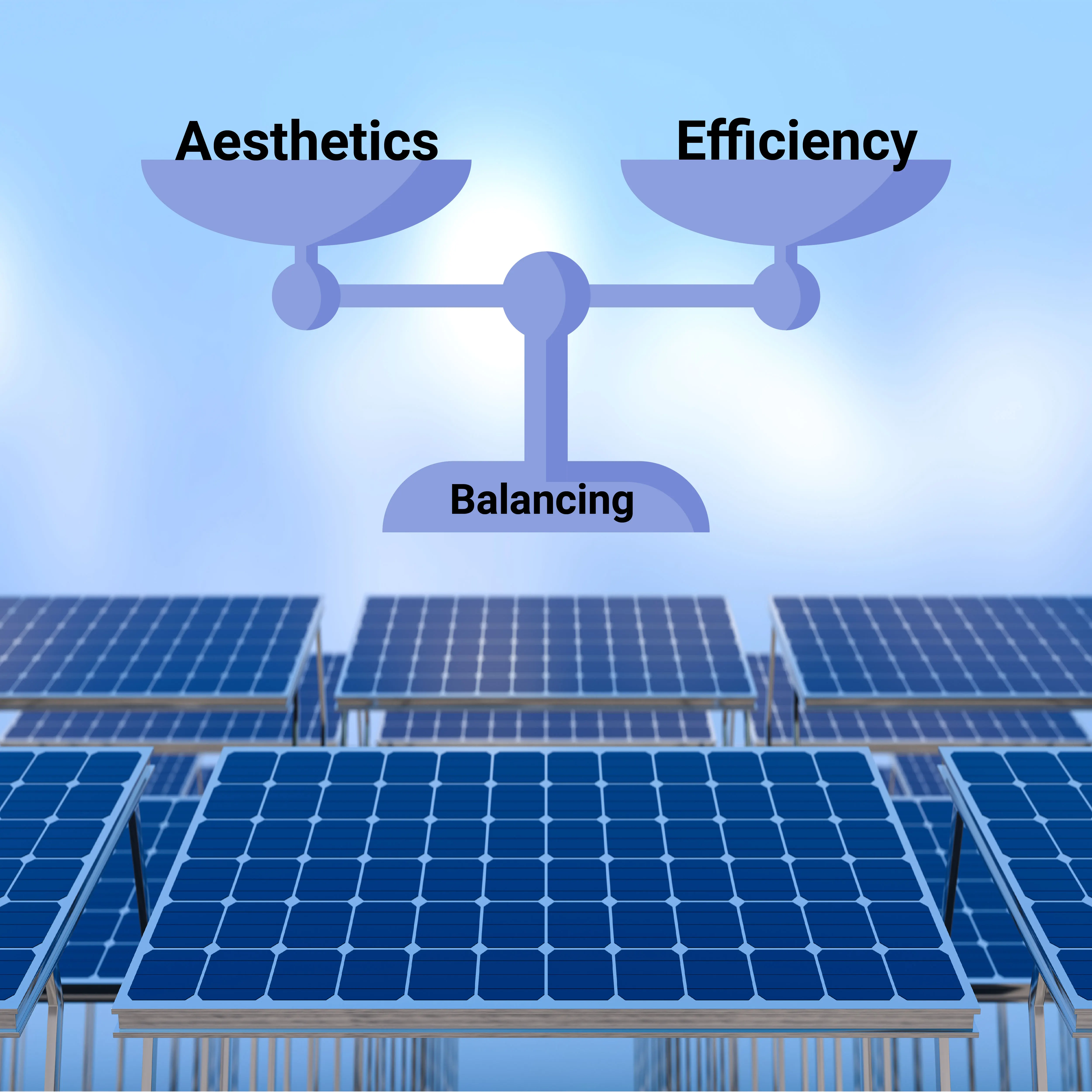
Balancing Aesthetics and Efficiency in Solar Plant Design
Mounting structures are essential for ensuring solar panels are positioned to capture maximum sunlight. Various types of mounting systems are used based on site requirements.
Striking the perfect balance between aesthetic appeal and functional efficiency is one of the key challenges in solar power plant design. Beyond simply arranging solar panels, the process involves maximizing energy production while harmonizing with the local landscape and community.
Key Considerations for an Effective Design
Assessing Energy Demand: Begin by evaluating the energy requirements the plant must fulfill. This analysis is crucial for determining the plant’s capacity and ensuring it meets long-term energy goals.
Panel Orientation and Tilt: Leverage advanced solar module mounting structures to optimize the panels' orientation and tilt angle, capturing maximum sunlight and enhancing energy efficiency.
Incorporating Energy Storage: Integrating energy storage systems helps balance supply and demand, ensuring a consistent energy supply even during periods of low sunlight.
Adopting Hybrid Systems: Combine solar power with other renewable energy sources or storage solutions to improve reliability and overall system performance.
Utilizing Bifacial Panels: Use bifacial solar panels to capture sunlight from both sides, significantly increasing energy production and land use efficiency.
Designing a solar power plant requires a thoughtful blend of engineering, environmental science, and community collaboration. The goal is to create a sustainable energy system that not only meets present-day energy needs but also adapts to future demands and technological innovations. This comprehensive approach ensures both high efficiency and positive community impact.
Designing the Electrical Layout
The electrical layout includes connecting modules, inverters, transformers, and other components to ensure efficient power conversion. Key considerations include:
String Configuration: Determining how solar modules are interconnected to optimize voltage and current levels.
Inverter Selection: Choosing inverters that match the energy output and efficiency of the system.
Grid Integration: Ensuring the plant seamlessly integrates with the local electricity grid for consistent energy delivery.
Collaborating with experienced photovoltaic panel manufacturers ensures each electrical component is of high quality and reliability.
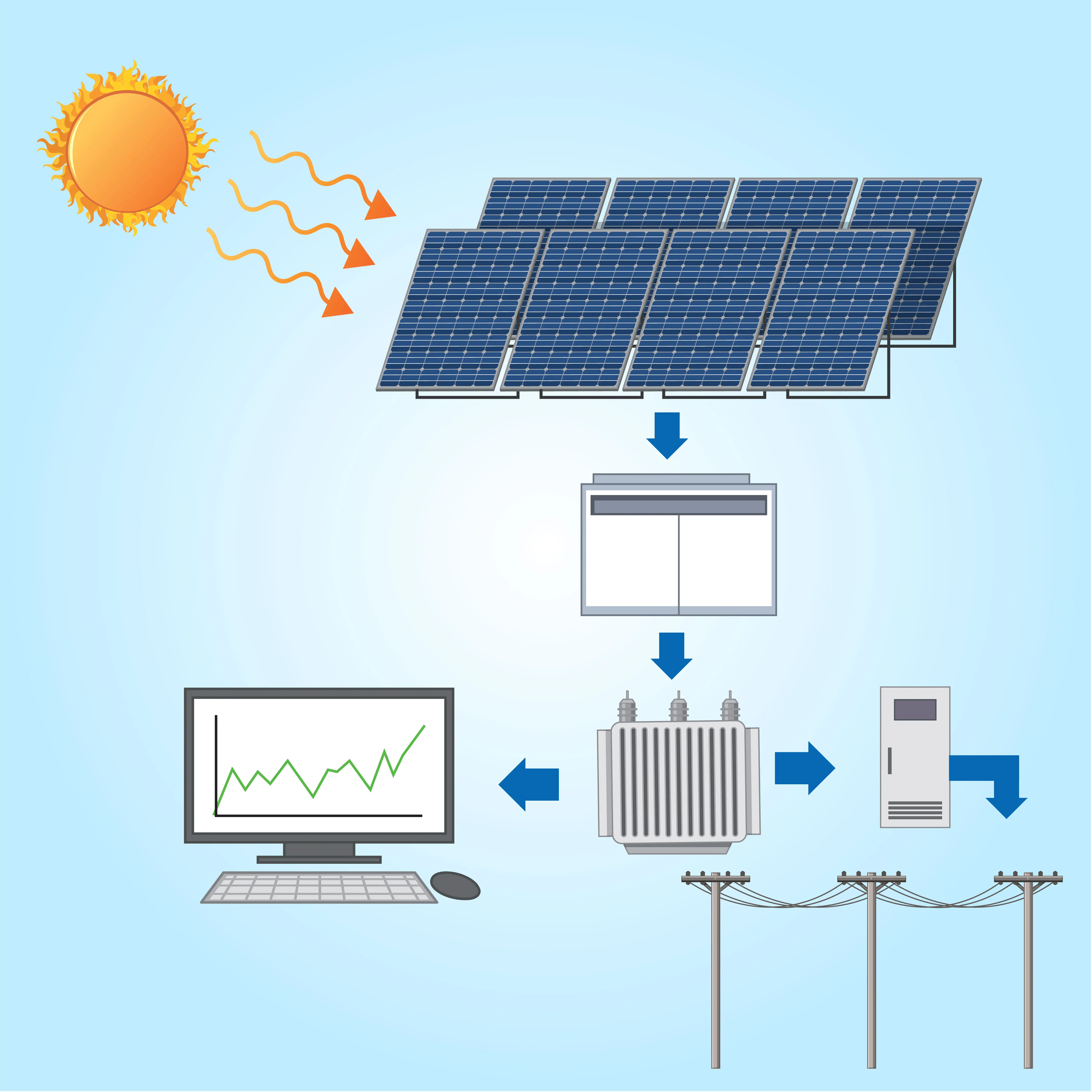
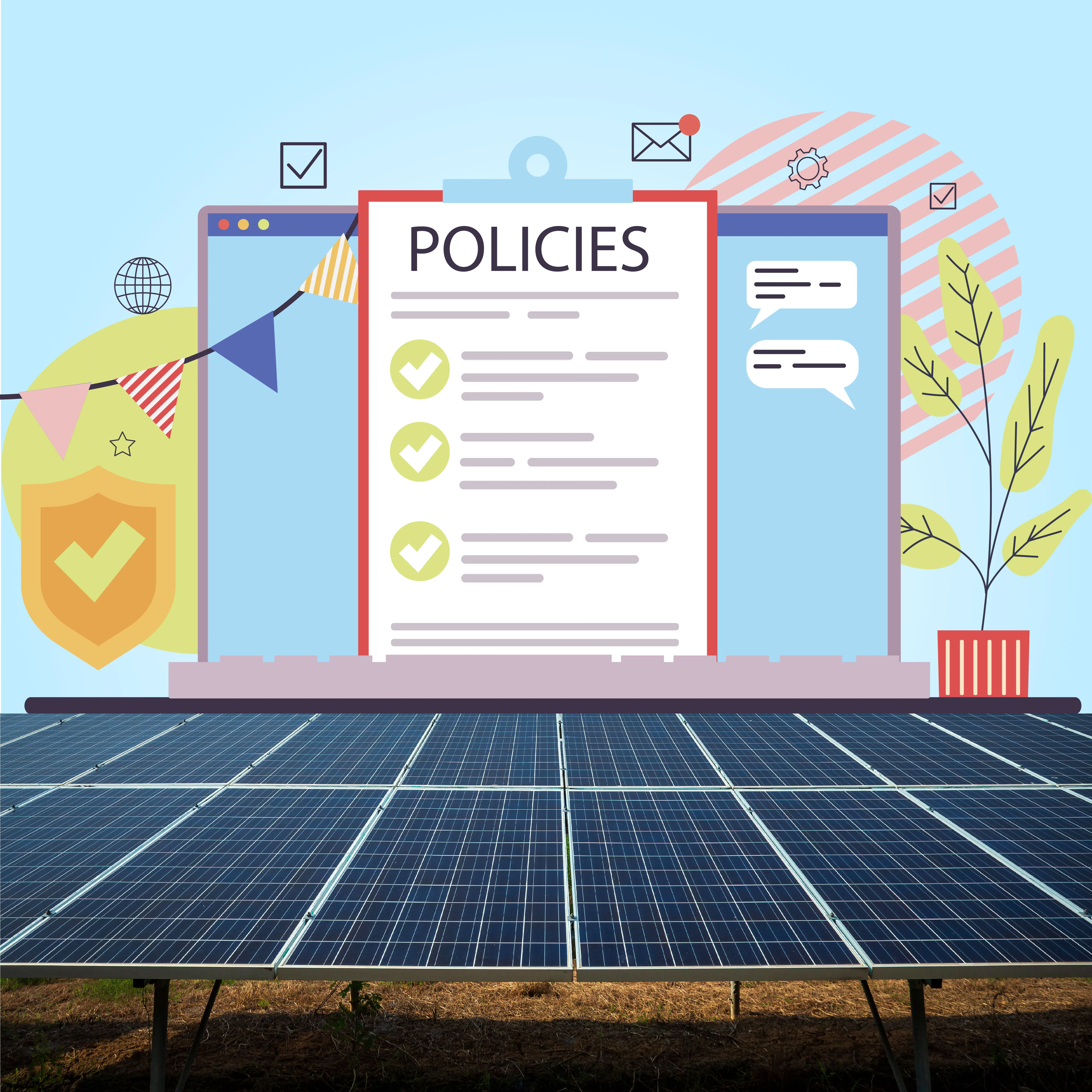
Ensuring Compliance and Permits
Secure Required Permits: Begin by obtaining all necessary permits from local and national authorities. This includes building permits, environmental clearances, and approvals for grid connectivity.
Understand Regional Regulations: Familiarize yourself with local rules related to land use, environmental conservation, and energy generation. Adhering to these regulations helps avoid legal complications and ensures a smooth project timeline.
Collaborate with Regulatory Authorities: Build strong relationships with regulatory bodies to streamline the approval process. Regular engagement can provide valuable guidance and support, ensuring compliance at every stage of the project.
Quality Assurance and Testing
The performance and longevity of a solar power plant rely on the quality and dependability of its components.Reputable manufacturers perform extensive testing, including:
Thermal Cycling: Assessing how panels perform under varying temperatures.
UV Testing: Ensuring durability against long-term sun exposure.
Mechanical Load Testing: Verifying resistance to wind, snow, and other environmental stresses.
These quality assurance measures are critical to maximizing the lifespan and performance of solar plants.
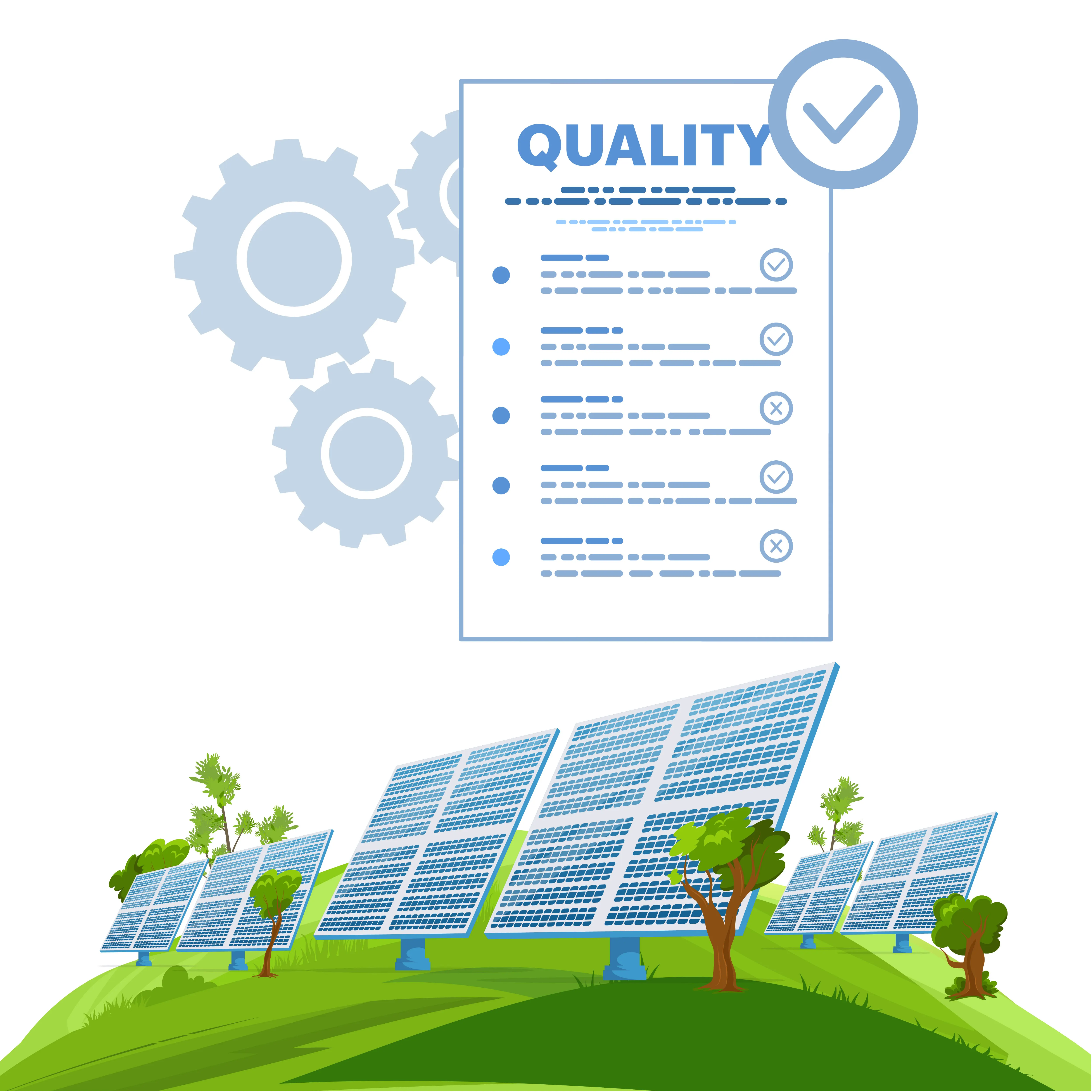
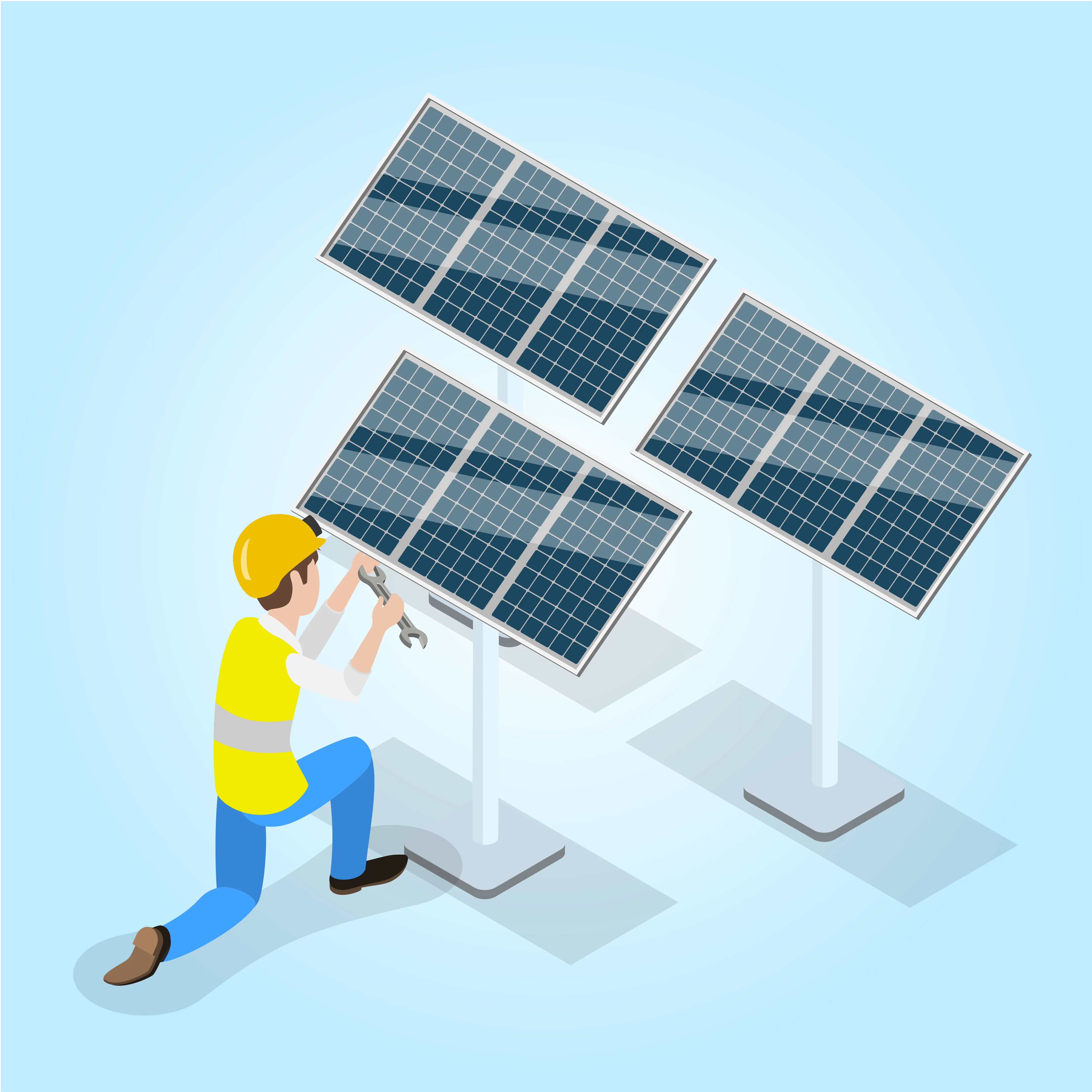
Installation and Commissioning
Once the design phase is complete, the installation begins. Skilled teams handle the mounting of panels, laying of electrical connections, and installation of auxiliary equipment. After installation, the plant undergoes a commissioning process, which includes:
- Testing all components for functionality.
- Ensuring seamless energy transfer to the grid.
- Verifying overall system performance.
- Proper installation and commissioning are vital to the long-term success of the project.
Financing and Ensuring Economic Viability for Solar Power Plants
The financial success of a solar power project hinges on a well-thought-out strategy that balances capital investment, operational sustainability, and revenue generation. A combination of smart financial planning, utilizing incentives, and understanding market trends is key to long-term viability.
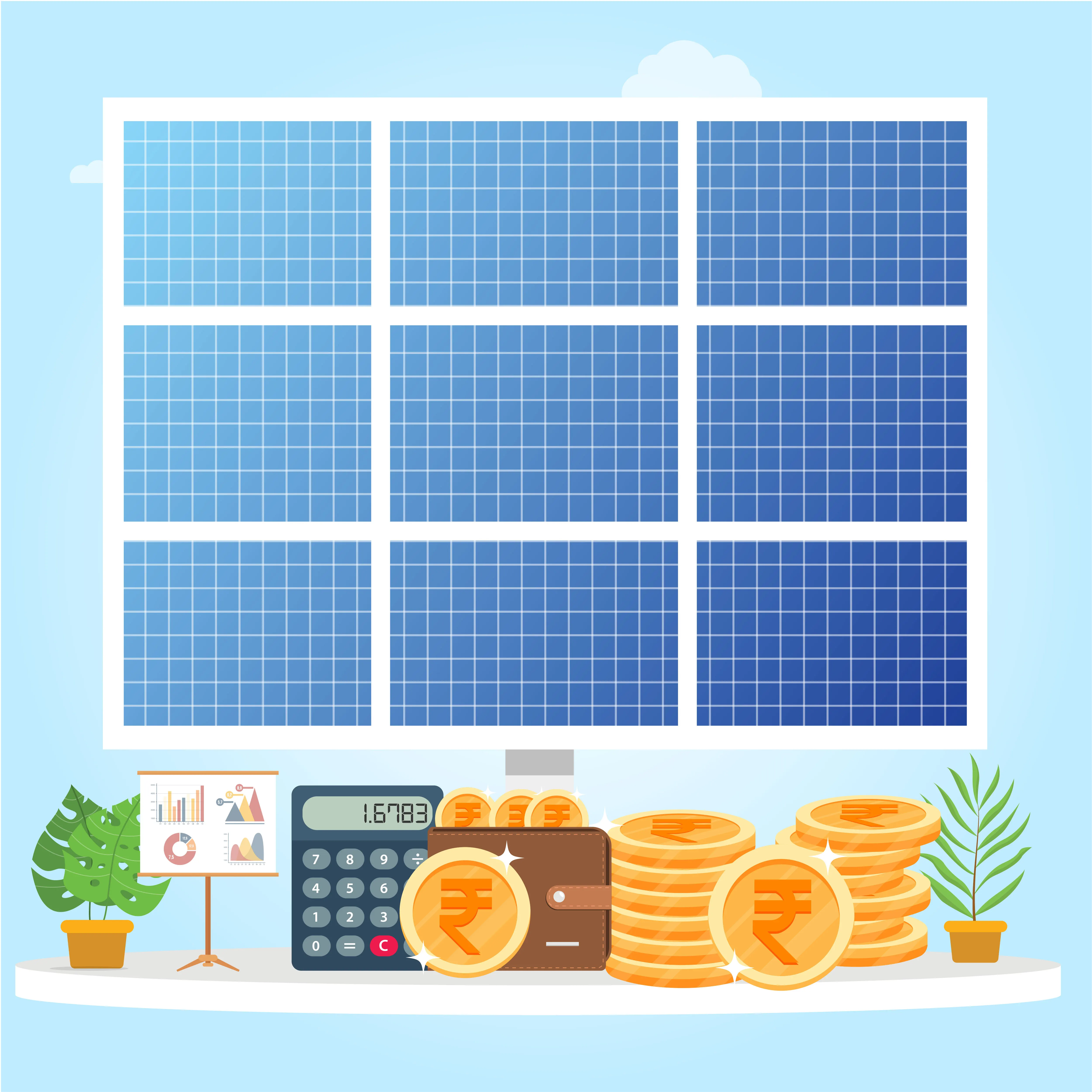
Key Financial Considerations
Capital Costs and Financing: Establishing a solar power plant involves significant upfront investment. To ease the financial burden, explore funding options such as loans, grants, and private investments.
Operational Expenses: Although solar plants benefit from low operating costs, it is crucial to account for regular maintenance, occasional repairs, and future upgrades to ensure consistent performance and financial stability.
Revenue Models: Identifying the most profitable revenue streams is essential. Options include selling electricity to the grid, entering into power purchase agreements (PPAs), or utilizing net metering to maximize returns.
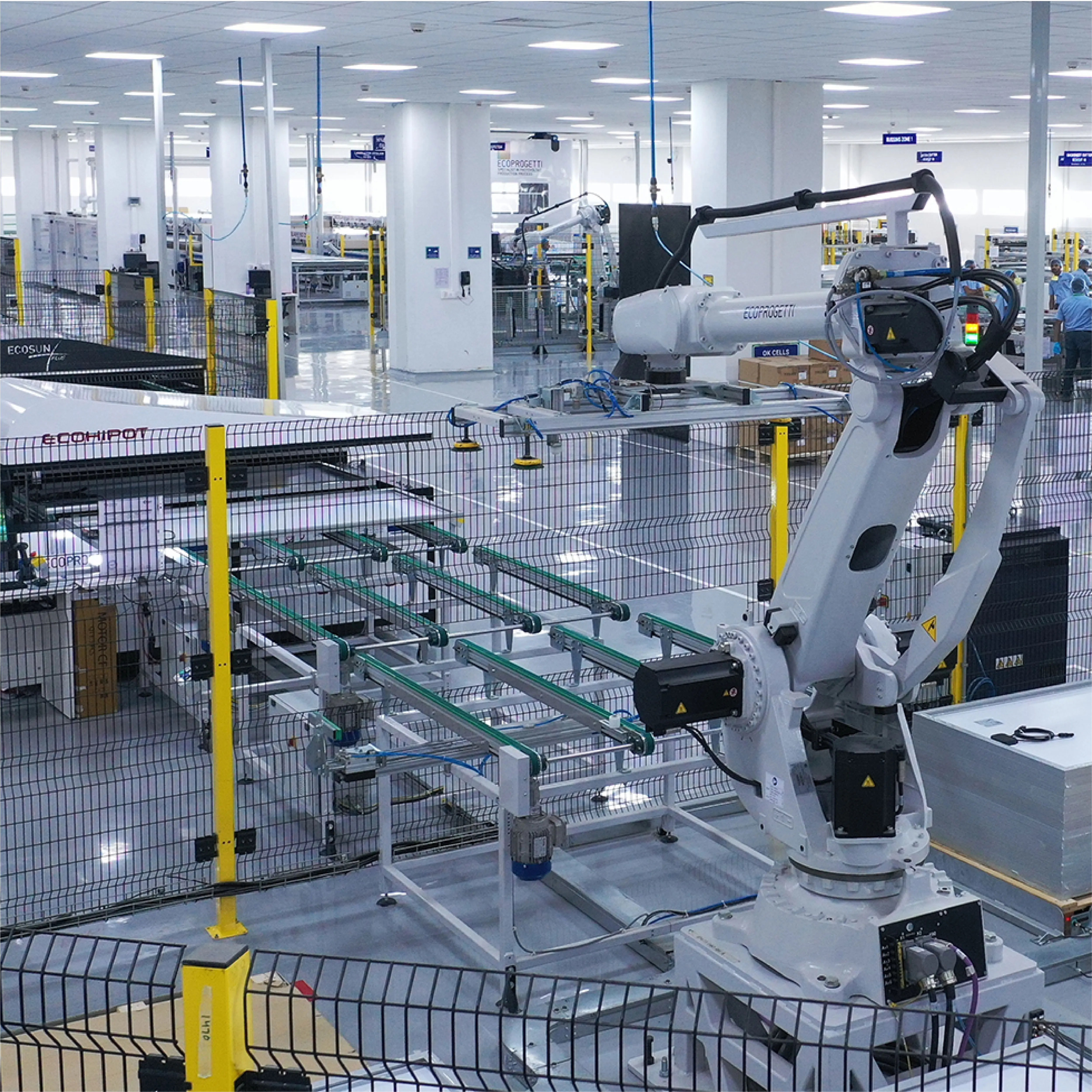
Benefits of Partnering with Leading Solar Panel Manufacturers
Here’s why working with top solar panel manufacturers in India is crucial:
Quality Assurance: Access to certified solar module manufacturers ensures durability and efficiency.
Innovation: Manufacturers offer the latest monocrystalline modules and technologies.
Support: Comprehensive assistance from design to commissioning.
How PIXON Leads the Way in Solar Energy
At PIXON, we specialize in delivering high-quality solar solutions. From cutting-edge monocrystalline modules to durable module mounting structures, our expertise ensures exceptional performance and sustainability.
Wrapping Up
Designing a solar power plant is a meticulous process that integrates advanced technology, precise engineering, and sustainable practices. By partnering with trusted solar panel manufacturers and leveraging innovative solutions like monocrystalline modules, you can create a solar power plant that meets energy needs efficiently and sustainably.
Power Your Future with Solar!
Discover our range of solar panels and energy solutions at PIXON. Partner with us to build a greener tomorrow. Contact us today for expert consultation and high-performance solar modules.